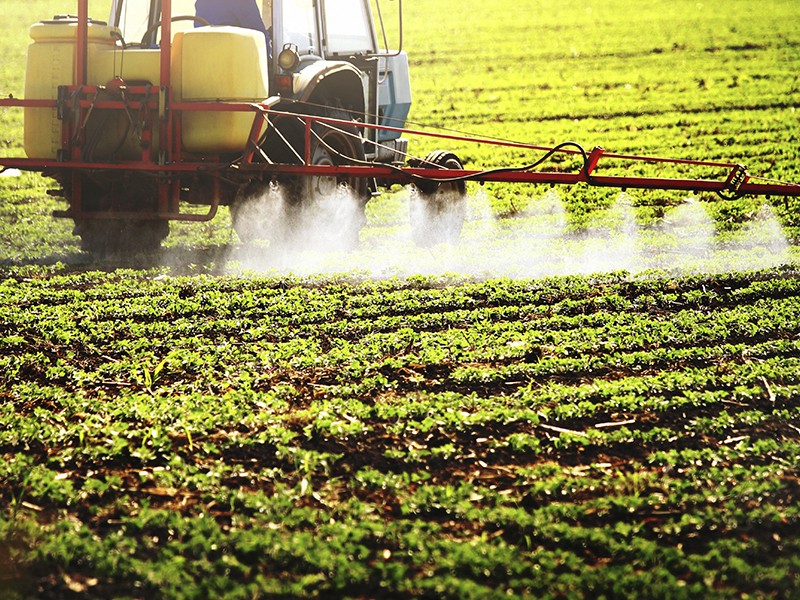Although chlorpyrifos was banned in the US in 2000, it is still allowed to be used as a chemical in the fields. In the hindsight, it continues to expose hundreds of farmworkers on the farmland with deadly consequences.
Amid the growing usage of harmful fertilisers and pesticides in agricultural fields and farmlands, the Biden administration is planning to restrain the usage of such pesticides across the country. US President Joe Biden has recently issued executive orders to protect people as well as children from the exposure of dangerous chemicals and pesticides while also laying a framework for re-examining the extent of utilisation of these chemical-based fertilisers.
According to a report published in Vice, starling conclusions have been released in a public forum proving the potential danger of pesticides on women and children. The report went on to look at the case of Claudia Angulo who is a Spanish migrant farmworker in California. She used to cultivate fruits and vegetables while also checking the quality of them by tasting their sweetness.
She has been doing this work for around 10 years but when her child was born, he was soon diagnosed with a disability. Thereafter a team found the presence of more than 50 chemical-based insecticides in his body. Among all of them, ‘chlorpyrifos’ was present at alarmingly higher levels in his body. Moreover, reports have also hinted that more than 90 percent of people in the US have pesticides or byproducts in their bodies.
Although chlorpyrifos was banned in the US in 2000, it is still allowed to be used as a chemical in the fields. In the hindsight, it continues to expose hundreds of farmworkers on the farmland. Now, environmental experts are emphasising on policies based on scientific approach and public health instead of industry or corporate-friendly profit-driven approach.
In 2015, the Obama administration sought the ban of usage of chlorpyrifos in farm fields. A study was done by Columbia University revealed the threatening effects of the chemical in 2011. But in 2017, the Trump administration rejected this proposal asking for more scientific proof. The United State Environmental Protection Agency said that it would look for restraining its usage but did not put an outright ban at that time.
What is chlorpyrifos and how dangerous it is?
Chlorpyrifos is a chemical pesticide that comes from organophosphates and was initially developed during the second World War to carry out chemical warfare against the enemies. American agriculture company Corteva Inc. used organophosphates in the 1960s to manufacture such fertilisers which can easily attack and paralyse insects’ nervous systems which eventually kill them.
These were made to specifically protect crops from pestilence and attacks of unwanted pests. Following that chlorpyrifos was developed to be the cheapest pesticide of the time. As far as agricultural usage is concerned, chlorpyrifos was first used in 1965. It is extensively used in the cultivation process of corn. In addition to that, crops like soybean, Brussels sprouts, cranberries, broccoli and cauliflower also get sprayed and fumigated by this hazardous pesticide.
Harmful effects of chlorpyrifos:
Several studies have proved that children who have been exposed to substantially higher levels of chlorpyrifos tend to suffer from low IQ levels, learning disabilities as the pesticide generally attacks that part of the brain which mostly regulates emotions and memory in the human body.
High doses of chlorpyrifos lead to respiratory paralysis, miscarriages in pregnant women while affecting nervous system and causing nausea, dizziness, confusion and death. Chronic effects of pesticides include leukemia, lymphoma and cancer of breasts, prostate, testis and ovaries.
In the long run it also results in birth defects among newborns, infertility and reproductive problems in men and women while also wrecking damage on liver, kidneys, lungs and brain. With that, these pesticides also contain chemicals which are known as endocrine disruptors affecting crucial functions of our body as endocrine controls and regulates metabolism, brain development and sleep cycle.
Chlorpyrifos and its effects on children:
Small and growing children seem to bear the most dangerous side effects caused due to the usage of fertilisers on crops, fruits, and vegetables. Children have nervous and immune systems that are growing with higher rates of cell division and this makes them more vulnerable to diseases caused by pesticides.
Children in close contact with this pesticide also have immature organs along with lower body weight. In addition to this, they have a higher respiratory rate due to which they inhale more airborne insecticides.
The poisoned picture of Punjab
Over the course of decades, consumption of pesticides have increased more than 50 percent in India. As per a report published by ICAR in 2017, Maharashtra remains at the top in utilising maximum amount of fertilisers in the country followed by Uttar Pradesh and Punjab. But, the per hectare consumption of fertilisers and pesticides is highest in Punjab and Haryana closely followed by Maharashtra.
In fact, Malwa region in Punjab accounts for almost 75 percent of the usage of total pesticides in the state. That’s why the region is quite infamously called ‘India’s Cancer Capital’ with an exponentially higher number of cancer cases being diagnosed in the people living in the region. For worse, the cases have risen three fold in the past decade.
Moreover, a study conducted in two villages of Malwa region in Patiala and Ludhiana inferred that almost 80 percent of farmers surveyed were known to be using harmful pesticides regularly. Farmers cultivating wheat were using three times more fertilisers than the normal limit while vegetables were found to be highly contaminated with heavy metals such as Chromium, Manganese, Nickel, Lead and Copper.
As a consequence of it, people are also found to suffer from deadly diseases such as Cancer and Hepatitis C. Children were also found to be suffering from delayed bodily development and gastrointestinal problems. Although no direct relationship has been established between the higher usage of chemicals in farming and these diseases in the population, many scientists are apprehensive of their potential contribution towards such a situation.

